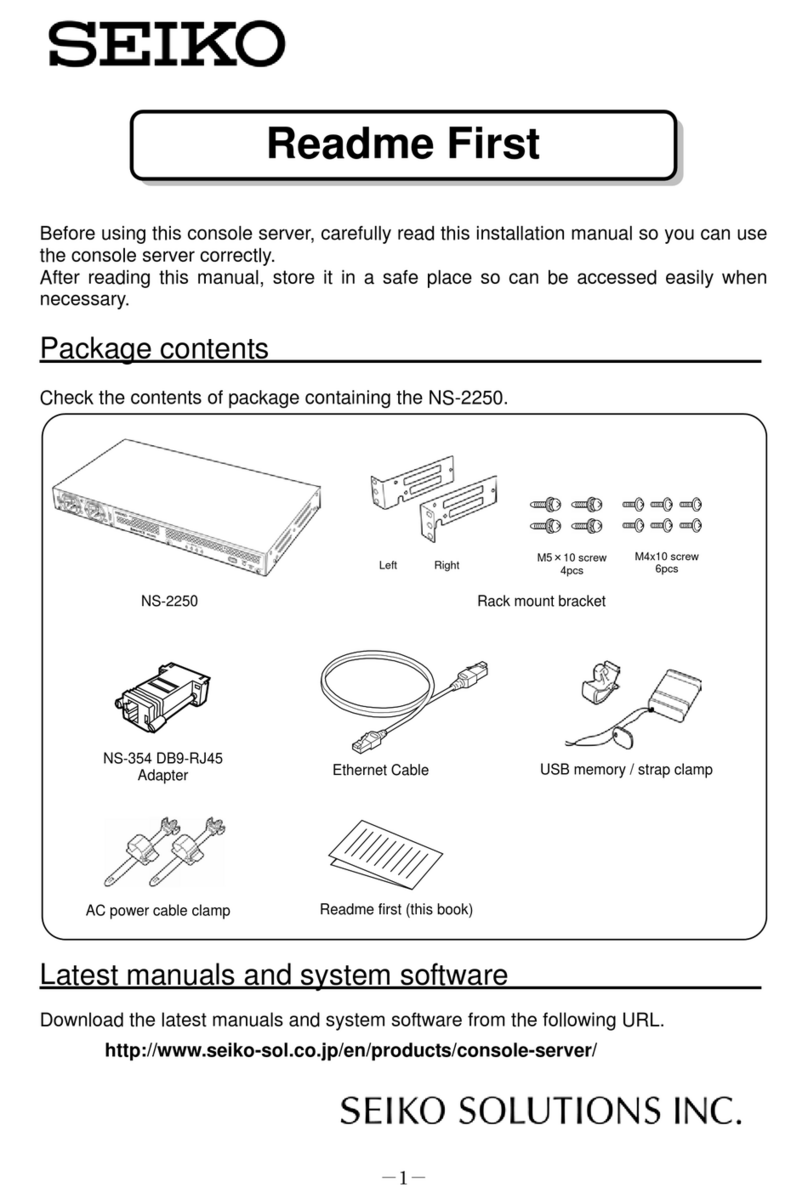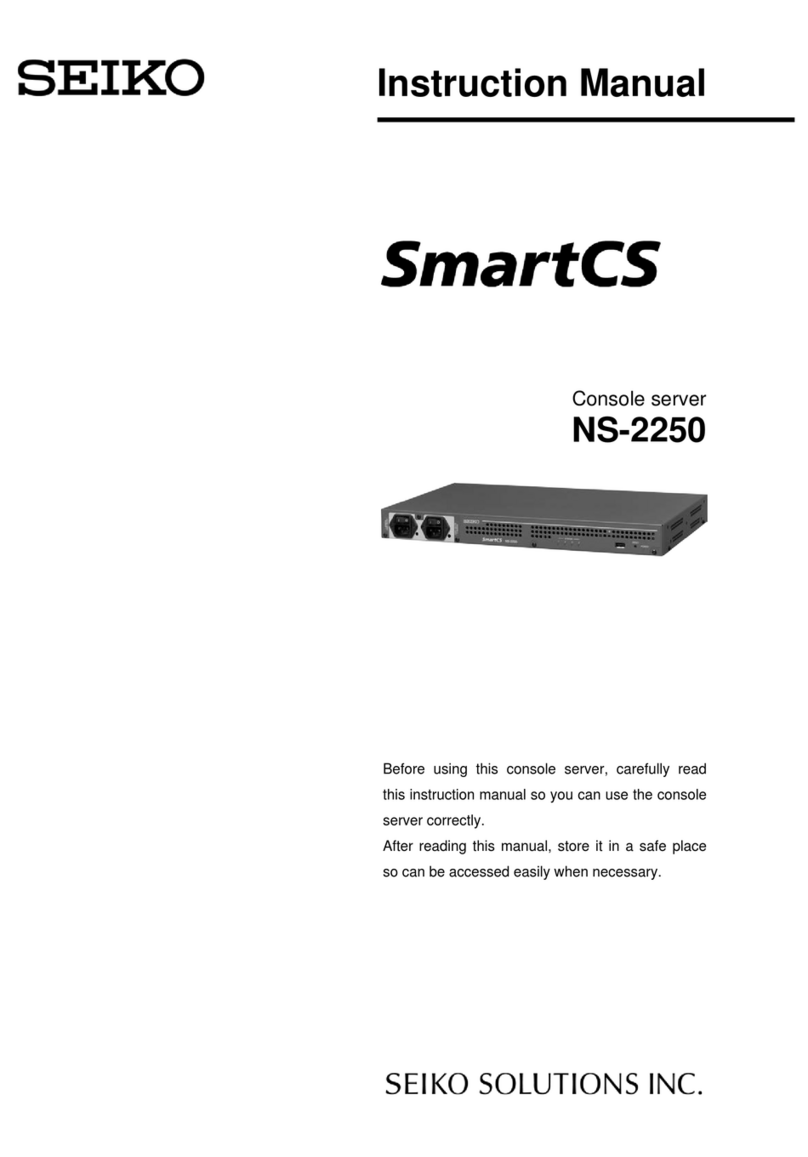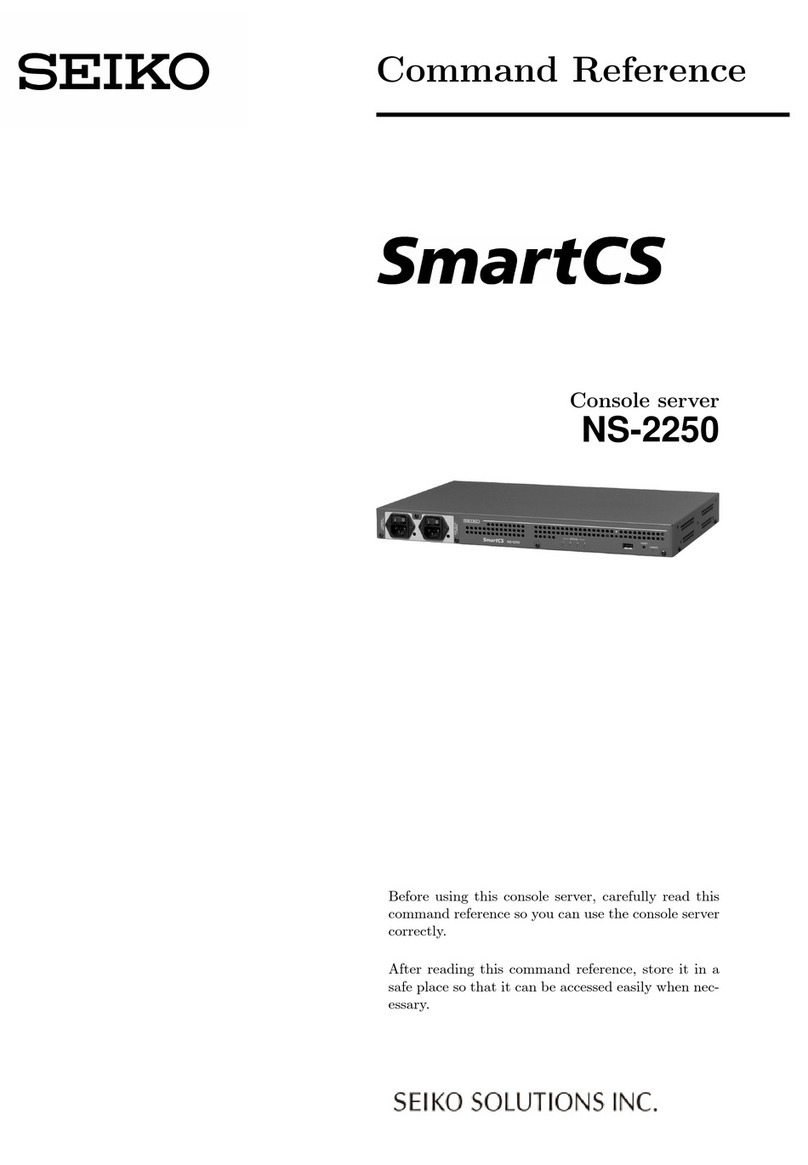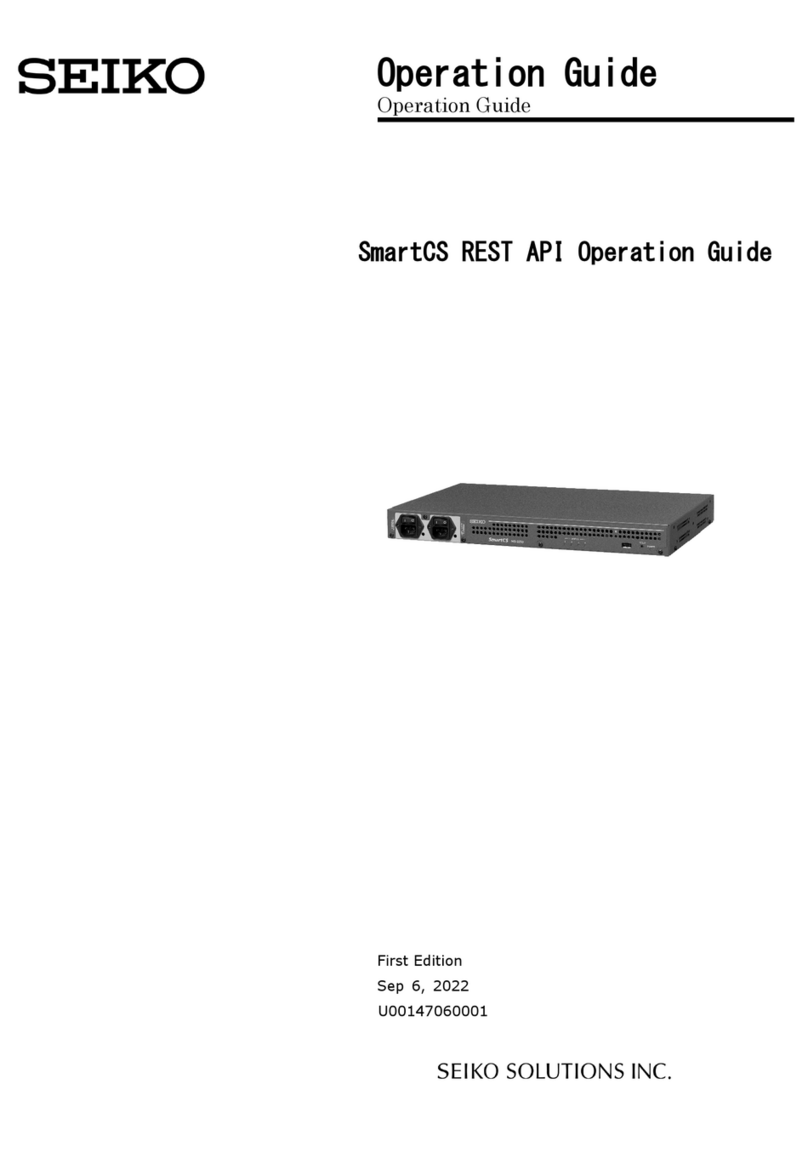Table of contents-1
Table of contents
Chapter 1 Command overview 1-1
1.1 Objects and Commands 1-2
1.2 Object commands overview 1-2
1.3 Object setting sequence 1-3
1.4 List specification 1-4
Chapter 2 Command List 2-1
2.1 Setting commands overview 2-2
2.2 Display commands overview 2-8
2.3 Maintenance commands overview 2-11
2.4 Other commands overview 2-13
Chapter 3 Command reference format 3-1
3.1 Format of the command reference explanation 3-2
Chapter 4 Setting commands 4-1
4.1 System setting commands 4-2
4.2 bonding setting commands 4-6
4.3 IP host setting commands 4-9
4.4 IP route setting commands 4-11
4.5 DNS setting command 4-13
4.6 LAN setting commands 4-17
4.7 User management and authentication setting commands 4-18
4.8 SNMP agent setting commands 4-28
4.9 SNMP trap setting commands 4-40
4.10 SNMP community setting commands 4-43
4.11 Syslog setting commands 4-46
4.12 NFS setting commands 4-51
4.13 SNTP setting commands 4-57
4.14 TTY setting commands 4-62
4.15 logd setting commands 4-64
4.16 portd setting commands 4-83
4.17 Console setting commands 4-100
4.18 Telnetd setting commands 4-101
4.19 sshd setting commands 4-104
4.20 ftpd setting commands 4-109
4.21 Security setting commands 4-111
4.22 Authentication setting commands 4-113
4.23 Accounting setting commands 4-144
































